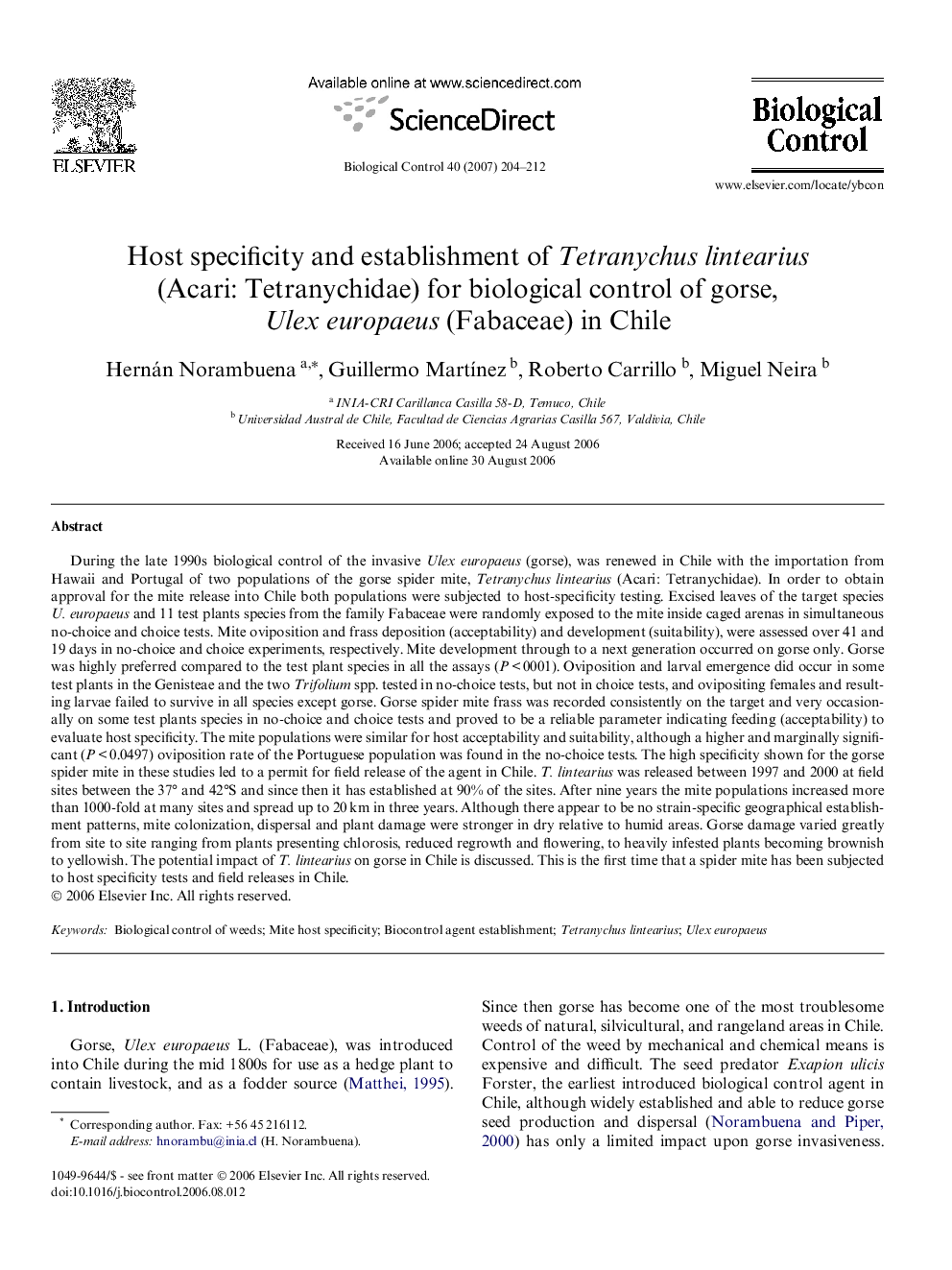| کد مقاله | کد نشریه | سال انتشار | مقاله انگلیسی | نسخه تمام متن |
|---|---|---|---|---|
| 4505214 | 1321133 | 2007 | 9 صفحه PDF | دانلود رایگان |

During the late 1990s biological control of the invasive Ulex europaeus (gorse), was renewed in Chile with the importation from Hawaii and Portugal of two populations of the gorse spider mite, Tetranychus lintearius (Acari: Tetranychidae). In order to obtain approval for the mite release into Chile both populations were subjected to host-specificity testing. Excised leaves of the target species U. europaeus and 11 test plants species from the family Fabaceae were randomly exposed to the mite inside caged arenas in simultaneous no-choice and choice tests. Mite oviposition and frass deposition (acceptability) and development (suitability), were assessed over 41 and 19 days in no-choice and choice experiments, respectively. Mite development through to a next generation occurred on gorse only. Gorse was highly preferred compared to the test plant species in all the assays (P < 0001). Oviposition and larval emergence did occur in some test plants in the Genisteae and the two Trifolium spp. tested in no-choice tests, but not in choice tests, and ovipositing females and resulting larvae failed to survive in all species except gorse. Gorse spider mite frass was recorded consistently on the target and very occasionally on some test plants species in no-choice and choice tests and proved to be a reliable parameter indicating feeding (acceptability) to evaluate host specificity. The mite populations were similar for host acceptability and suitability, although a higher and marginally significant (P < 0.0497) oviposition rate of the Portuguese population was found in the no-choice tests. The high specificity shown for the gorse spider mite in these studies led to a permit for field release of the agent in Chile. T. lintearius was released between 1997 and 2000 at field sites between the 37° and 42°S and since then it has established at 90% of the sites. After nine years the mite populations increased more than 1000-fold at many sites and spread up to 20 km in three years. Although there appear to be no strain-specific geographical establishment patterns, mite colonization, dispersal and plant damage were stronger in dry relative to humid areas. Gorse damage varied greatly from site to site ranging from plants presenting chlorosis, reduced regrowth and flowering, to heavily infested plants becoming brownish to yellowish. The potential impact of T. lintearius on gorse in Chile is discussed. This is the first time that a spider mite has been subjected to host specificity tests and field releases in Chile.
Journal: Biological Control - Volume 40, Issue 2, February 2007, Pages 204–212